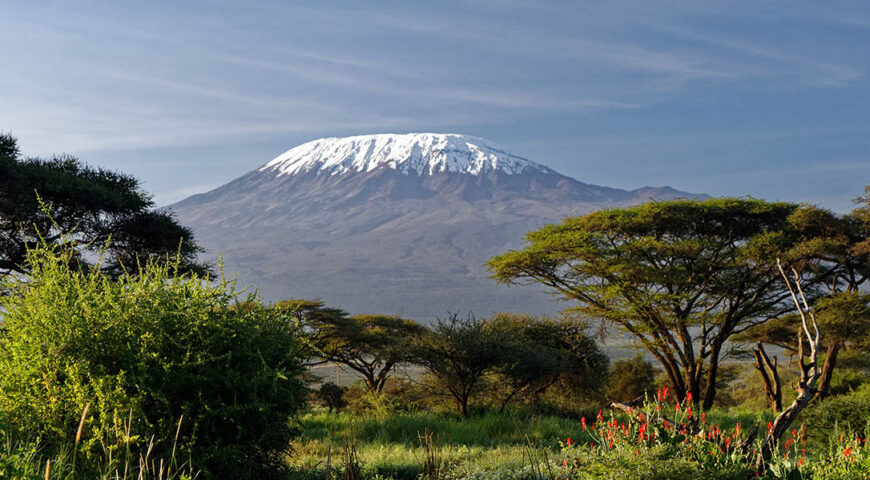
The Climb
The Ndifo Crew Climbs Mt. Kilimanjaro
 After months of training and preparation, the Ndifo Crew took to the mountain in April for seven life-changing days and nights. It was the most difficult thing any of us have ever done. Gym training and cardio can get your physical body ready for this, but there are few experiences that ready your mind and spirit for the challenges faced on such a long climb. The feeling of discovering that all the clothing that is currently not on your body is soaked through inside a faulty waterproof bag, and will not dry at any point on the trip, can be overwhelming (more about the rainy season below). Altitude sickness trying to consume you more and more each day makes you question every step forward. The experiece could make or break anyone. And coming down the mountain is almost as hard as going up on slick piles of gravel and snow that feel more than quicksand than a mountain.
Steve Ngowi, Ndifo’s owner & lead guide, was born and raised on the southern slope of Kilimanjaro. Although he’d spent his life gazing at the mountain, he never dreamed of climbing it. “Climbing was for the foreign visitors to Tanzania,” Steve remembers, “it is not something that many local citizens can afford to do. Much gear and training is needed for this climb.” Steve did know young men his age who became porters for the tourist climbs – everyone knew what a hard life that was carrying up to 33lb (15kg) on their backs and heads up and down the 19,300ft (5,895m) slick rock mountain over and over with only the most basic gear. So like most other Tanzanians, just the thought of making the climb never crossed Steve's mind.
But now that Steve is a tour operator himself, he found guests asking his opinion about the climb. To be able to consult in a knowledgeable manner, he knew that it was time to climb the mountain himself. And as a Tanzanian, he felt that it was time to claim his own Tanzanian experience on Kilimanjaro. The crew spent months working out and running each day to get ready. It was a mission. Below, we detail more of the experience and recommendations for prospective climbers.
Now that he’s done it, this is one more aspect of the wonders of Tanzania that Steve can share with guests when they want experiences beyond safari. Read more here about what this climb means to Steve.
After months of training and preparation, the Ndifo Crew took to the mountain in April for seven life-changing days and nights. It was the most difficult thing any of us have ever done. Gym training and cardio can get your physical body ready for this, but there are few experiences that ready your mind and spirit for the challenges faced on such a long climb. The feeling of discovering that all the clothing that is currently not on your body is soaked through inside a faulty waterproof bag, and will not dry at any point on the trip, can be overwhelming (more about the rainy season below). Altitude sickness trying to consume you more and more each day makes you question every step forward. The experiece could make or break anyone. And coming down the mountain is almost as hard as going up on slick piles of gravel and snow that feel more than quicksand than a mountain.
Steve Ngowi, Ndifo’s owner & lead guide, was born and raised on the southern slope of Kilimanjaro. Although he’d spent his life gazing at the mountain, he never dreamed of climbing it. “Climbing was for the foreign visitors to Tanzania,” Steve remembers, “it is not something that many local citizens can afford to do. Much gear and training is needed for this climb.” Steve did know young men his age who became porters for the tourist climbs – everyone knew what a hard life that was carrying up to 33lb (15kg) on their backs and heads up and down the 19,300ft (5,895m) slick rock mountain over and over with only the most basic gear. So like most other Tanzanians, just the thought of making the climb never crossed Steve's mind.
But now that Steve is a tour operator himself, he found guests asking his opinion about the climb. To be able to consult in a knowledgeable manner, he knew that it was time to climb the mountain himself. And as a Tanzanian, he felt that it was time to claim his own Tanzanian experience on Kilimanjaro. The crew spent months working out and running each day to get ready. It was a mission. Below, we detail more of the experience and recommendations for prospective climbers.
Now that he’s done it, this is one more aspect of the wonders of Tanzania that Steve can share with guests when they want experiences beyond safari. Read more here about what this climb means to Steve.
Want to do it, too?
Here are some tips for planning your Kilimanjaro climb
- When you go is VERY important
 Navigating the slippery rocks[/caption]
We did this trip at the height of rainy season, which isn't recommended for many people. The rain caused the living conditions to be more difficult than the actual climb at times. It rained inside our tents many nights, so everything we had stayed wet. Wearing a poncho half the time kills the mood a little as well. However, there are very few climbers on the mountain this time of year – the place belongs to you, and you move at your own pace. When you go during the more physically comfortable high season, the mountain will experience incredible traffic jams at places like the Barranco Wall (described in harrowing detail below) where climbers must pass one-by-one. When there are hundreds of climbers and porters passing through this bottleneck, you may wait for hours just to pass.
Navigating the slippery rocks[/caption]
We did this trip at the height of rainy season, which isn't recommended for many people. The rain caused the living conditions to be more difficult than the actual climb at times. It rained inside our tents many nights, so everything we had stayed wet. Wearing a poncho half the time kills the mood a little as well. However, there are very few climbers on the mountain this time of year – the place belongs to you, and you move at your own pace. When you go during the more physically comfortable high season, the mountain will experience incredible traffic jams at places like the Barranco Wall (described in harrowing detail below) where climbers must pass one-by-one. When there are hundreds of climbers and porters passing through this bottleneck, you may wait for hours just to pass.
- Rainy season: End-February to mid-May
- Peak season: June to October
- High season: Through the end of November
 Steve having his daily medical checkup[/caption]
Steve having his daily medical checkup[/caption]
- Getting Ready
 Carrying all our stuff![/caption]
You don’t have to be an elite athlete to climb Kilimanjaro whatsoever, but you have to be in the best shape of your life and able to climb for hours on back-to-back-to-back days. You’ll be navigating slick mountain rocks and incredibly steep snow packs for up to 8 hours in a day – and in some spots you’ll use your arms to pull yourself over a ledge. Get your lungs ready for extreme altitude. It wouldn't hurt to check in with a doctor before you go. Train somewhere at altitude if you have a chance as your lungs will suffer far more than your legs if your cardio isn't there.
Carrying all our stuff![/caption]
You don’t have to be an elite athlete to climb Kilimanjaro whatsoever, but you have to be in the best shape of your life and able to climb for hours on back-to-back-to-back days. You’ll be navigating slick mountain rocks and incredibly steep snow packs for up to 8 hours in a day – and in some spots you’ll use your arms to pull yourself over a ledge. Get your lungs ready for extreme altitude. It wouldn't hurt to check in with a doctor before you go. Train somewhere at altitude if you have a chance as your lungs will suffer far more than your legs if your cardio isn't there.
- Know Your Gear & Your Clothing
- Tipping
- Route
Machame Route Notes
 This is now the most popular route on the mountain. Compared with Marangu, the days on Machame are longer and the walks are steeper. The Machame route is considered a difficult route, and is better suited for more adventurous folks and those with some hiking or backpacking experience. The route begins from the south, then heads east, traversing underneath Kilimanjaro's southern ice field before summiting.
The minimum number of days required for this route is six days, although seven days is recommended. The Machame route is scenically beautiful and varied. However, due to the heavy crowds, it loses some of its splendor during high season.
This is now the most popular route on the mountain. Compared with Marangu, the days on Machame are longer and the walks are steeper. The Machame route is considered a difficult route, and is better suited for more adventurous folks and those with some hiking or backpacking experience. The route begins from the south, then heads east, traversing underneath Kilimanjaro's southern ice field before summiting.
The minimum number of days required for this route is six days, although seven days is recommended. The Machame route is scenically beautiful and varied. However, due to the heavy crowds, it loses some of its splendor during high season.
| DAY 0: The day before our climb, our guides, Martin and Jackson, met with us to review our gear and make sure we had everything we would need. |
 |
| DAY 1: MACHAME GATE TO MACHAME CAMP (Elevation 5,400ft to 9,400ft, Distance: 11 km, Hiking Time: 5-7 hours, Habitat: Rain Forest)The drive from our hotel in Moshi to National Park Gate took about an hour. It suddenly occurred to us what we were actually about to do. A nervous anticipation began to set in. We left all our belongings with the 12 porters who were going to carry it all up with them – on their backs and their heads the whole way.Then we set off up the mountain with our guides. We had no idea how many times these guys would save our lives. The walk goes through the forest on a winding trail up;; a ridge, and the was muddy and slippery. We ended at Machame Camp where we had our first great, warm meal prepared in the camp over an open fire. |
     |
DAY 2: MACHAME CAMP TO SHIRA CAMP
(Elevation: 9,400ft to 12,500ft, Distance: 5 km, Hiking Time: 4-6 hours, Habitat: Moorland)After breakfast, we left the glades of the rain forest and continued on an ascending path, crossing the little valley walking along a steep rocky ridge covered with heather, until the ridge ends then west into a river gorge.   |
DAY 3: SHIRA CAMP TO LAVA TOWER TO BARRANCO CAMP
(Elevation: 12,500ft to 13,000ft, Distance: 10 km, Hiking Time: 6-8 hours, Habitat: Semi Desert)From the Shira Plateau, we continued to the east up a ridge, passing the junction towards the peak of Kibo. We reached the Lava Tower, then up to the Arrow Glacier at an altitude of 16,000ft. We then continued down to the Barranco Hut at an altitude of 13,000ft. Although we ended the day at the same elevation as when we started, the day is very important for acclimatization.
    |
NEW Day 4 (We combined day 4&5 of a suggested 7 day climb to finish in 6 days to get out of the rain.)
DAY 4: BARRANCO CAMP TO KARANGA CAMP + DAY 5: KARANGA CAMP TO BARAFU CAMP
(Elevation: 13,000ft to 15,300ft, Distance: 9 km, Hiking Time: 8-10 hours; Habitat: Alpine Desert)
This was a tough day. We decided to combine day 4 & 5 because the rain was so punishing that we feared that our cold, wet nights of getting no sleep would exhaust us more than pushing through with to shorter days together. The day begins with a bang – the first thing is crossing a river to go right over to a sheer piece of rock called the Barranco Wall. This part of the climb is seriously no joke. This is the part you really need to be fit for as you are climbing slick, narrow patches of rock along a cliffside over to what is called “The Kissing Rock” or “Hugging Wall”. This reference is made because of the narrowness of the trail at this point. When climbing this portion, you need to flatten against the wall to avoid falling off a steep drop. It can be a bit intimidating. Many climbers will kiss the wall as they pass through. Although you do not need to be an expert climber to tackle the wall, you need to be a smart climber. The Barranco Wall is made up of steep and narrow paths that require climbers to use all four limbs to traverse the ascent.Then we passed the the Karanga Valley campsite and continue up to the Barafu Hut. That was the completion of the South Circuit. Here we made camp and prepared for the summit day. The two peaks of Mawenzi and Kibo can be seen from this position.
[arve url="https://ndifosafari.com/wp-content/uploads/2024/04/barranchawall-1.mp4" /]

  [arve url="https://ndifosafari.com/wp-content/uploads/2024/04/sunrise-2.mp4" /] [arve url="https://ndifosafari.com/wp-content/uploads/2024/04/sunrise-2.mp4" /] |
DAY 5: BARAFU CAMP TO SUMMIT
(Elevation: 18,600ft to 10,000ft, Distance: 5 km ascent / 12 km descent, Hiking Time: 7-8 hours ascent / 4-6 hours descent. Habitat: Arctic)This was the toughest day hands down. We began hiking at 1am in the pitchblack with side-ways sleety-snowy-rain pounding us. It was cold and miserable, and nobody had slept much. We made our way up to the summit between the Rebmann and Ratzel glaciers. This is the most mentally and physically challenging portion of the trek. Every step was made with extreme effort for the next 7 hours. The sun finally made it’s way above the clouds as we reached Stella Point (18,600 ft).If climbing Kilimanjaro is the hardest thing we’ve ever done, coming down is the second. From the very first step all the many hours back to base camp, every step is a mixture of snowy gravel that acted like quicksand with every step – forcing you to remain light on your feet and move quickly or risk being sucked into the mountain.[arve url="https://ndifosafari.com/wp-content/uploads/2024/04/summit-1.mp4"/]
  
|
Gear
This is just as important as your own body’s physical readiness.
The right gear will make all the difference in your climb:
| Outer Pants |
|
| Jackets |
|
| Under Clothes |
|
| Shoes |
|
| Socks |
|
| Gear |
|
| Gloves |
|
| Sleeping Bag |
|
| Headgear |
|
| Duffle Bags |
|
| Sunscreen and Wet Wipes |
|
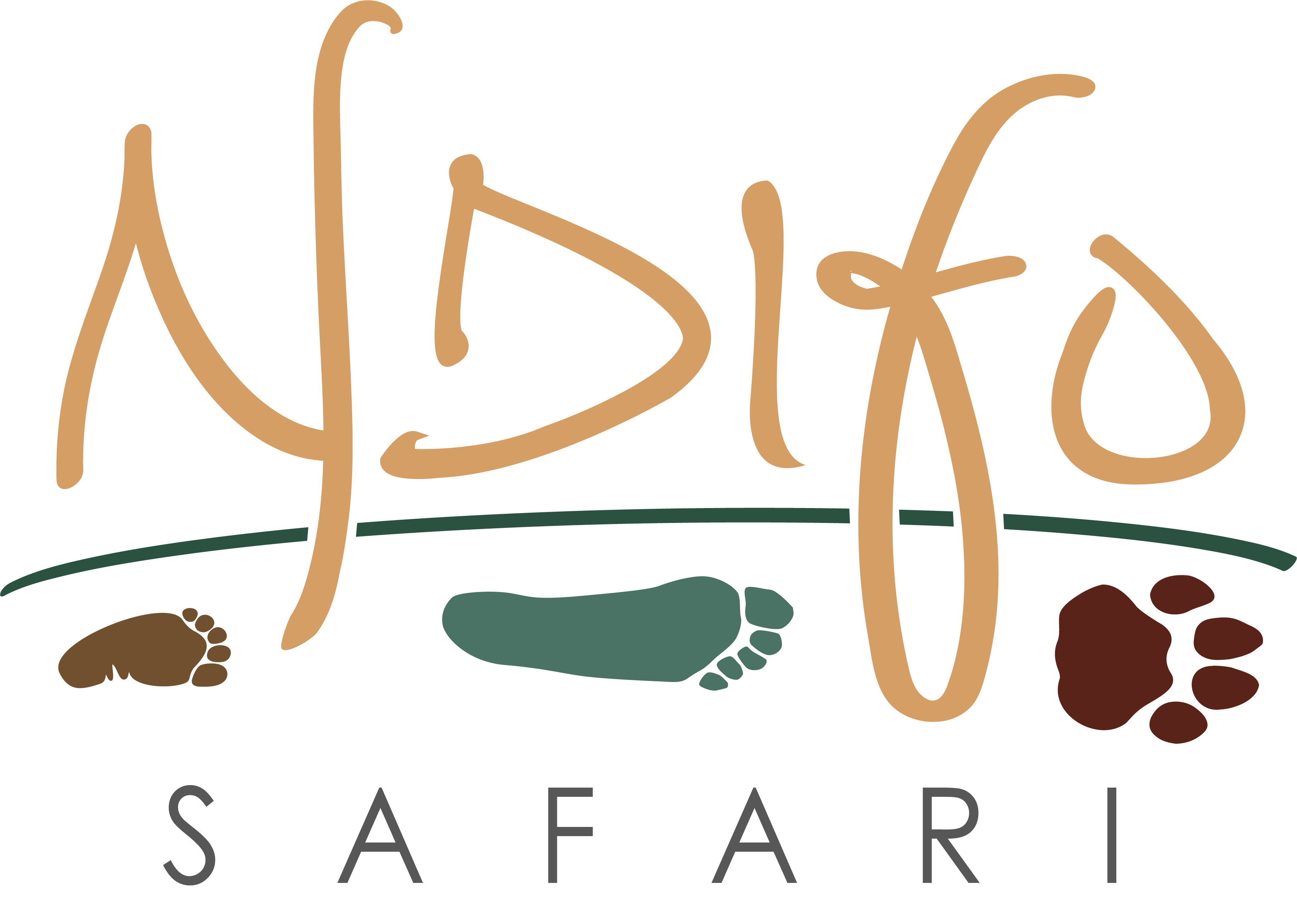
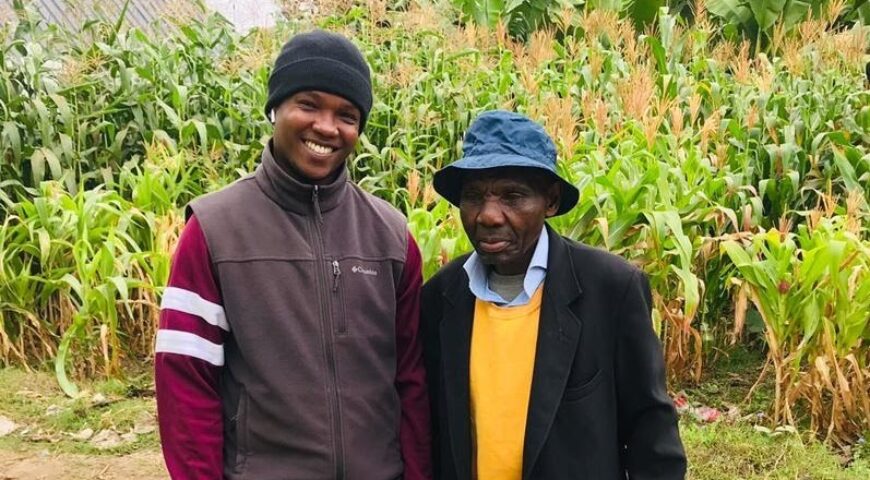
 Steve reflects on what this journey means to him:
“We call Kilimanjaro the pillar of our strength as the Chagga tribe. The mountain is just next door but unfortunately many of us cannot manage to climb it. We see people fly across the world to come and record that they have been on the highest peak in Africa and the highest free-standing mountain in the world. But we as Tanzanians we aren't lucky to climb it because it's expensive. Just to invest in the gear to go for the climb people will ask themselves if they can afford it. So, I am honored to do it as a Tanzanian.
I always viewed the mountain as the highest point of the earth. Every morning we would go see it as the skies was clear, looking at the snow above it. It was always a beautiful view. Now I am going to climb it!
The mountain in our community is being viewed as the mountain of strength and survival. Most of our land gets water from this mountain. The water that flows down the slopes is the same water we will use for our daily use, Now I get to see this source. Water is very meaningful for us. My grandmother used to warn us that when we see the water leave and our farm is dry, the end would be very close. Now many communities will struggle if this water goes away, which there is always threat of. Now the river only flows in the rainy season and there can be a struggle with water in Tanzania.
No one in my family has ever been to the top of Kilimanjaro. We are really looking forward to it, and sometimes now, I dream of it."
Follow along with Steve as he gets ready for this journey of a lifetime.
Steve reflects on what this journey means to him:
“We call Kilimanjaro the pillar of our strength as the Chagga tribe. The mountain is just next door but unfortunately many of us cannot manage to climb it. We see people fly across the world to come and record that they have been on the highest peak in Africa and the highest free-standing mountain in the world. But we as Tanzanians we aren't lucky to climb it because it's expensive. Just to invest in the gear to go for the climb people will ask themselves if they can afford it. So, I am honored to do it as a Tanzanian.
I always viewed the mountain as the highest point of the earth. Every morning we would go see it as the skies was clear, looking at the snow above it. It was always a beautiful view. Now I am going to climb it!
The mountain in our community is being viewed as the mountain of strength and survival. Most of our land gets water from this mountain. The water that flows down the slopes is the same water we will use for our daily use, Now I get to see this source. Water is very meaningful for us. My grandmother used to warn us that when we see the water leave and our farm is dry, the end would be very close. Now many communities will struggle if this water goes away, which there is always threat of. Now the river only flows in the rainy season and there can be a struggle with water in Tanzania.
No one in my family has ever been to the top of Kilimanjaro. We are really looking forward to it, and sometimes now, I dream of it."
Follow along with Steve as he gets ready for this journey of a lifetime.
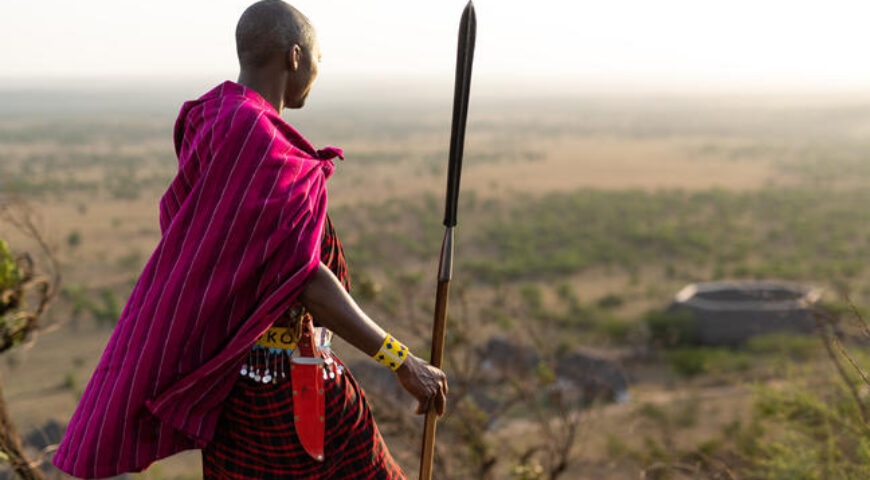

 Kenya, South Africa, Zimbabwe, and Tanzania all provide opportunities to see diverse wildlife in protected parks, but Tanzania provides the richest wildlife experience.
As its neighbor, Kenya shares many of the same types of wildlife in its safari. However, Kenya has suffered from overtourism, and shrinking wildlife habitat has further limited opportunities to experience its wildlife. More specifically, Kenya and South Africa at the bottom of the African continent have dedicated less than 10% of their land mass as protected parks.
In contrast,
Kenya, South Africa, Zimbabwe, and Tanzania all provide opportunities to see diverse wildlife in protected parks, but Tanzania provides the richest wildlife experience.
As its neighbor, Kenya shares many of the same types of wildlife in its safari. However, Kenya has suffered from overtourism, and shrinking wildlife habitat has further limited opportunities to experience its wildlife. More specifically, Kenya and South Africa at the bottom of the African continent have dedicated less than 10% of their land mass as protected parks.
In contrast,  Tanzania boasts a richer abundance of wildlife in its expansive natural areas compared to South Africa's protected parks. With numerous diverse wildlife reserves, Tanzania provides a greater likelihood of encountering sought-after animals in comparison to smaller and more congested parks. The prospect of witnessing “
Tanzania boasts a richer abundance of wildlife in its expansive natural areas compared to South Africa's protected parks. With numerous diverse wildlife reserves, Tanzania provides a greater likelihood of encountering sought-after animals in comparison to smaller and more congested parks. The prospect of witnessing “
 The Great Migration is a phenomenal spectacle of the natural world. The migration unfolds continuously throughout the year, encircling the Serengeti in a perpetual cycle. As depicted in the illustration, most of this awe-inspiring phenomenon occurs within Tanzania, with a slight portion extending into Kenya during the mid-year period. Tanzania offers a plethora of locations to witness The Great Migration, and it stands as the exclusive destination to observe the birth of newborns during the initial months of the year in the southern region.
More than two million wildebeest, zebras, antelopes, gazelles, and various other animals embark on a perpetual journey across the Serengeti, all driven by the quest for fresh grass and water. This remarkable migration follows a consistent clockwise pattern around the Serengeti each year. Nowhere else on Earth can you witness this extraordinary spectacle, accompanied by the unique symphony of sounds and the distinctive aromas of the wild. Enormous herds of wildebeest synchronize their movements and vocalize collectively, creating a living entity akin to the synchronized flight of flocks of birds, but grounded on land. It is truly a mesmerizing sight to behold.
The Great Migration is a phenomenal spectacle of the natural world. The migration unfolds continuously throughout the year, encircling the Serengeti in a perpetual cycle. As depicted in the illustration, most of this awe-inspiring phenomenon occurs within Tanzania, with a slight portion extending into Kenya during the mid-year period. Tanzania offers a plethora of locations to witness The Great Migration, and it stands as the exclusive destination to observe the birth of newborns during the initial months of the year in the southern region.
More than two million wildebeest, zebras, antelopes, gazelles, and various other animals embark on a perpetual journey across the Serengeti, all driven by the quest for fresh grass and water. This remarkable migration follows a consistent clockwise pattern around the Serengeti each year. Nowhere else on Earth can you witness this extraordinary spectacle, accompanied by the unique symphony of sounds and the distinctive aromas of the wild. Enormous herds of wildebeest synchronize their movements and vocalize collectively, creating a living entity akin to the synchronized flight of flocks of birds, but grounded on land. It is truly a mesmerizing sight to behold.


 As nomadic pastoralists, the Maasai rely extensively on the cattle they raise for nearly all aspects of their sustenance, including food, clothing, and shelter. Given their agrarian lifestyle, hunting does not play a significant role in their daily activities. Instead, they periodically relocate their homes to facilitate the movement of their cattle for grazing and water. The wealth of the Maasai is measured by the quantity of cows they possess. Traditionally, they inhabit the
As nomadic pastoralists, the Maasai rely extensively on the cattle they raise for nearly all aspects of their sustenance, including food, clothing, and shelter. Given their agrarian lifestyle, hunting does not play a significant role in their daily activities. Instead, they periodically relocate their homes to facilitate the movement of their cattle for grazing and water. The wealth of the Maasai is measured by the quantity of cows they possess. Traditionally, they inhabit the  The Hadzabe, commonly known as the Bushmen, is a safeguarded hunter-gatherer tribe located in the southwest Karatu District of the Arusha Region in Tanzania. They inhabit the areas surrounding the Lake Eyasi basin in the central Rift Valley and the adjacent Serengeti Plateau.
The Hadzabe, commonly known as the Bushmen, is a safeguarded hunter-gatherer tribe located in the southwest Karatu District of the Arusha Region in Tanzania. They inhabit the areas surrounding the Lake Eyasi basin in the central Rift Valley and the adjacent Serengeti Plateau.








 Tanzania has earned a reputation for its travel-friendly atmosphere and is consistently
Tanzania has earned a reputation for its travel-friendly atmosphere and is consistently 
 If you are seeking the perfect finishing touch, look no further: Tanzania is not merely a safari paradise but Tanzania also acts as your portal to an exhilarating gorilla trekking adventure in Rwanda. The challenge of tracking down gorillas in southern safari countries is effortlessly overcome with Tanzania, allowing a seamless transition from the Serengeti to Rwanda with a quick plane hop. It's akin to enjoying the best of both worlds without breaking a sweat.
If you are seeking the perfect finishing touch, look no further: Tanzania is not merely a safari paradise but Tanzania also acts as your portal to an exhilarating gorilla trekking adventure in Rwanda. The challenge of tracking down gorillas in southern safari countries is effortlessly overcome with Tanzania, allowing a seamless transition from the Serengeti to Rwanda with a quick plane hop. It's akin to enjoying the best of both worlds without breaking a sweat.
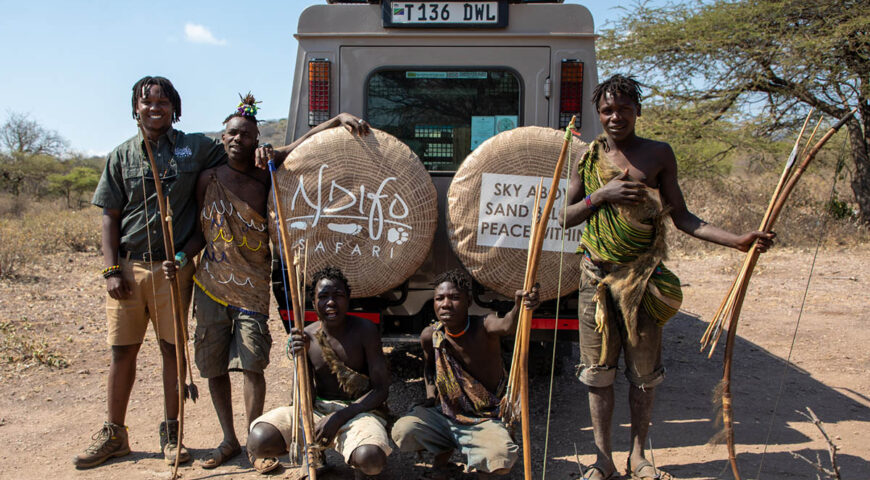
 Steven, Sr, as a young safari guide[/caption]
[caption id="attachment_7046" align="alignleft" width="300"]
Steven, Sr, as a young safari guide[/caption]
[caption id="attachment_7046" align="alignleft" width="300"] Steven, Sr, still enjoys going on safari as a guest[/caption]
I was raised by my grandfather, Steven Ngowi, Sr., in the safari life. I fell in love with the Tanzanian and Kenyan wildlife that I encountered regularly throughout my upbringing. I learned from a very early age about the delicate balance of wildlife conservation and care for indigenous tribes closely sharing their daily existence with the wildlife. I have a deep connection with both.
After I reached adulthood, I began my career at some of the top travel companies in East Africa, and I learned so much from them. I am one of the few guides in East Africa to have achieved the walking guide qualification. This requires at least 18 months of specialized training in the use of firearms and over 120 hours of supervised experience in the field - with ongoing training throughout my career. Most guides do not have this type of training - less than 10%. Having a qualified safari walking guide adds something extra for our guests. This means they may choose to experience the feeling of walking among the animals outside the confines of a vehicle.
My blood contains the soil of East Africa, and no one from another continent could know it better than someone like me what my country has to offer and how to explore it ethically with maximum impact for the guest. I know this land like the back of my hand and can position my guest in a place to see the best wildlife and landscapes.
Steven, Sr, still enjoys going on safari as a guest[/caption]
I was raised by my grandfather, Steven Ngowi, Sr., in the safari life. I fell in love with the Tanzanian and Kenyan wildlife that I encountered regularly throughout my upbringing. I learned from a very early age about the delicate balance of wildlife conservation and care for indigenous tribes closely sharing their daily existence with the wildlife. I have a deep connection with both.
After I reached adulthood, I began my career at some of the top travel companies in East Africa, and I learned so much from them. I am one of the few guides in East Africa to have achieved the walking guide qualification. This requires at least 18 months of specialized training in the use of firearms and over 120 hours of supervised experience in the field - with ongoing training throughout my career. Most guides do not have this type of training - less than 10%. Having a qualified safari walking guide adds something extra for our guests. This means they may choose to experience the feeling of walking among the animals outside the confines of a vehicle.
My blood contains the soil of East Africa, and no one from another continent could know it better than someone like me what my country has to offer and how to explore it ethically with maximum impact for the guest. I know this land like the back of my hand and can position my guest in a place to see the best wildlife and landscapes.
 The word “ndifo” means “footprints” in Chagga, the native tongue of my grandfather and me. It’s about me following in his footsteps and achieving his dream and mine. We are the uniquely African safari company. See the footprints in our logo?
The word “ndifo” means “footprints” in Chagga, the native tongue of my grandfather and me. It’s about me following in his footsteps and achieving his dream and mine. We are the uniquely African safari company. See the footprints in our logo?
 Visiting with the Datooga tribe[/caption]
Visiting with the Datooga tribe[/caption]
 Making arrows with the Hadzabe (Bushmen)[/caption]
Making arrows with the Hadzabe (Bushmen)[/caption]
 Jewelry made by the Datooga[/caption]
Jewelry made by the Datooga[/caption]

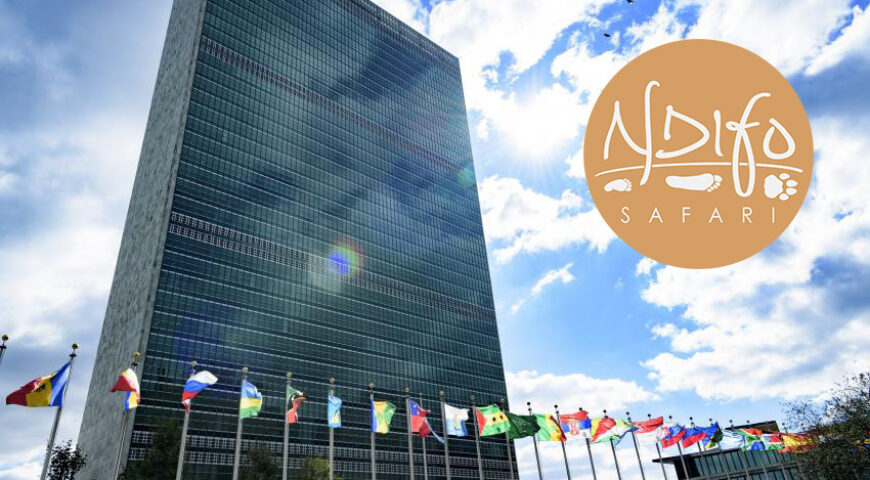
 He came to New York City
He came to New York City  From the United Nations: The tourism sector is one of the major contributors to the Sustainable Development Goals (SDG's) with the United Nations pushing for the sector to be sustainable in the interest of the world and its people. In Tanzania, young people are contributing to the sector first as a source of employment but also contributing to the national economy and the surrounding communities. Among them is Steven Ngowi, who owns the tourism company Ndifo Safari, who besides being a tour guide is active in various community projects and helping to save endangered animals.
From the United Nations: The tourism sector is one of the major contributors to the Sustainable Development Goals (SDG's) with the United Nations pushing for the sector to be sustainable in the interest of the world and its people. In Tanzania, young people are contributing to the sector first as a source of employment but also contributing to the national economy and the surrounding communities. Among them is Steven Ngowi, who owns the tourism company Ndifo Safari, who besides being a tour guide is active in various community projects and helping to save endangered animals.
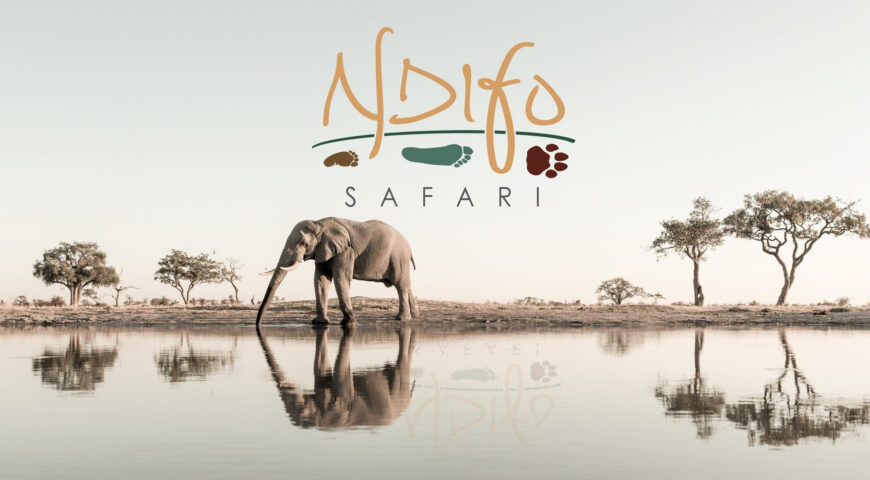










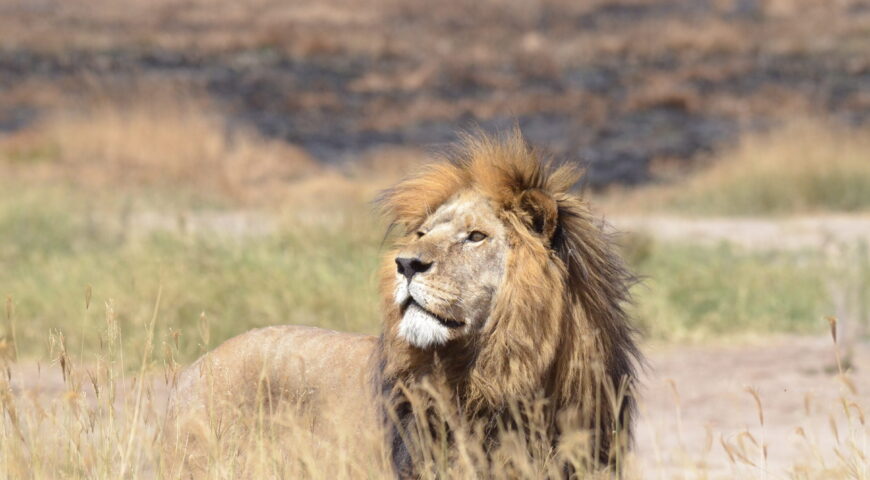

 Bob Jr. was recognizable due to his size and appearance. He looked very much like his dad with the major difference being that his dad’s mane had more prominent dreadlocks. He was arguably the most handsome lion in the Serengeti.
The very first time I saw Bob Jr, we had a moment where we locked eyes and he produced his famous growl that I felt deep inside my soul. He was so large that when he would stand beside our vehicle, he could almost reach the window to give us a high five!
Bob Jr. played a huge role protecting the pride by making sure it was safe in his territory. Lions growl when they are mating, eating or fighting. Their roars let intruders know whose land it is and to heed the warning not to come into their territory. With this, Bob Jr. only needed one growl, and he could fend off and scare away any predator.
One evening our group was out on a game drive exploring as usual when we came across Bob Jr. walking while raising his head high. We could sense that there was something out there that he had seen already so we started following him
Bob Jr. was recognizable due to his size and appearance. He looked very much like his dad with the major difference being that his dad’s mane had more prominent dreadlocks. He was arguably the most handsome lion in the Serengeti.
The very first time I saw Bob Jr, we had a moment where we locked eyes and he produced his famous growl that I felt deep inside my soul. He was so large that when he would stand beside our vehicle, he could almost reach the window to give us a high five!
Bob Jr. played a huge role protecting the pride by making sure it was safe in his territory. Lions growl when they are mating, eating or fighting. Their roars let intruders know whose land it is and to heed the warning not to come into their territory. With this, Bob Jr. only needed one growl, and he could fend off and scare away any predator.
One evening our group was out on a game drive exploring as usual when we came across Bob Jr. walking while raising his head high. We could sense that there was something out there that he had seen already so we started following him
 to discover what was afoot. All of a sudden, we saw the whole pride feeding on Eland, the biggest Antelope in Africa. He led us to the scene.
He walked in and you could just feel the respect that the pride had for him. The pride had some young ones inside there but they never bothered him. It seemed Bob Jr. had finished his portion of the meal as we arrived, he stood there looking over them while they feasted on their share - like a proud papa. We were so elated by this amazing sighting. Dark was falling so we had to finally leave to go back to camp, but otherwise we would have stayed there for hours.
What I admired the most about Bob Jr, was that he made sure nothing would come and harm his pride. Especially when it came to the reproduction of the female lions. Some of his females were expecting newborns but with the new males taking off there's a limited chance the cubs will survive. He was not an animal to mess around with, there was this time I was watching him and his cubs were around, with just one grawl the cubs all went separate ways.
to discover what was afoot. All of a sudden, we saw the whole pride feeding on Eland, the biggest Antelope in Africa. He led us to the scene.
He walked in and you could just feel the respect that the pride had for him. The pride had some young ones inside there but they never bothered him. It seemed Bob Jr. had finished his portion of the meal as we arrived, he stood there looking over them while they feasted on their share - like a proud papa. We were so elated by this amazing sighting. Dark was falling so we had to finally leave to go back to camp, but otherwise we would have stayed there for hours.
What I admired the most about Bob Jr, was that he made sure nothing would come and harm his pride. Especially when it came to the reproduction of the female lions. Some of his females were expecting newborns but with the new males taking off there's a limited chance the cubs will survive. He was not an animal to mess around with, there was this time I was watching him and his cubs were around, with just one grawl the cubs all went separate ways.
 While Bob Jr. was still strong, he was not strong enough to be the leader of the pride forever. This was the ultimate reason for his violent death. This became evident in the summer of 2022. I noticed that he started scavenging for food & it was clear that he was not capable of leading & participating in hunting anymore.
The last time I saw Bob Jr was around July 2022. On March 11th of the following year, I learned of his death from a friend out in the Serengeti who messaged me the sad news. Shortly after I noticed the news had gone viral on social media & it was spread all over the globe that Bob Jr had died. Something so personal to me & my country was now being shared with the world. We were proud to know him.
While Bob Jr. was still strong, he was not strong enough to be the leader of the pride forever. This was the ultimate reason for his violent death. This became evident in the summer of 2022. I noticed that he started scavenging for food & it was clear that he was not capable of leading & participating in hunting anymore.
The last time I saw Bob Jr was around July 2022. On March 11th of the following year, I learned of his death from a friend out in the Serengeti who messaged me the sad news. Shortly after I noticed the news had gone viral on social media & it was spread all over the globe that Bob Jr had died. Something so personal to me & my country was now being shared with the world. We were proud to know him.


 Every traveler has a budget.[/caption]
Every traveler has a budget.[/caption]
 Let's get into the details to determine which suits your preferences and budget.[/caption]
Let's get into the details to determine which suits your preferences and budget.[/caption]
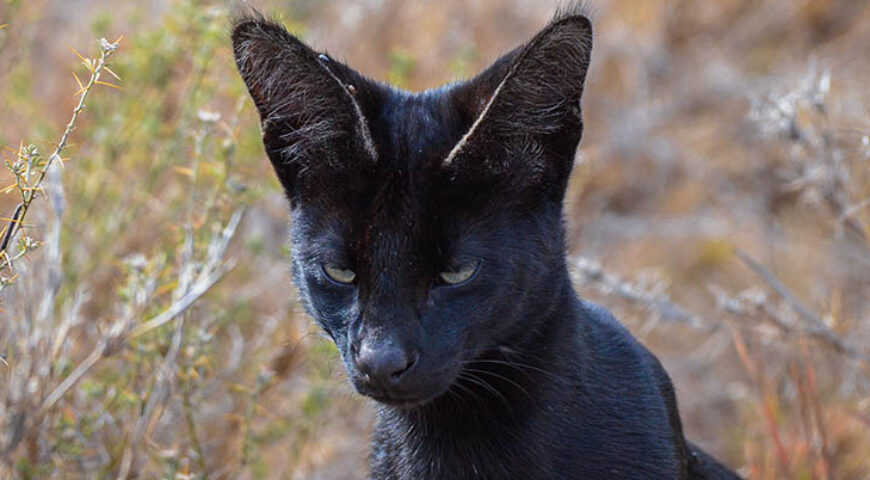
 When I was a schoolboy, on a class trip to the Aberdares National Park in Kenya, we came across a pure black cat that was too fast for anyone to identify. No one could explain what we had seen. The black cat remained just a flash in my mind, but it lived with me for years. Years later, I heard reports that a melanistic leopard had been spotted in that area. Then another one was spotted at Laikipia National Park, also in Kenya. This one had been photographed with camera traps, so proof of his existence was finally presented - he wasn’t just a myth. The flash in my mind had been real after all. Now, hearing that a black cat was seen in the Serengeti got my attention again.
This black beauty would have been more expected in the highlands more than 2km above sea level because of animals living at higher altitudes having a tendency towards melanism. This phenomenon allows them to absorb more heat from the sun. We were well below that altitude in our part of the Serengeti, so this black cat seemed to be a new discovery in our ecosystem. So to say that we woke up on the second day really hoping to see him is a great understatement. All the guides were still all abuzz about the legend of the black cat, but everyone we came across had failed to find him. We went from spot-to-spot following possible sightings. After a while, we really did began to believe it really was just a myth. A black cat shouldn't be here.
Then finally! We saw just a speck of black. We slowed and tried to focus to see him. We could feel his presence. After a few minutes we saw something pouncing from the tall grass, and our excitement grew. The little black serval cat was hunting so it moved along purposefully. We creeped along watching him hunt rodents, lizards and birds. It felt like stalking a house cat. This was the rarest animal sighting that I have ever encountered in my career. The black cat that the guides had gotten a glimpse of was a serval cat - very rare and unexpected! No one knows where he came from but we guessed it may have been from the Ngorongoro highlands.
The sun was so beautiful in a way that you could see how beautiful his black fur was. We were able to see many magnificent things on this day. We went back to camp being the happiest people in the whole Serengeti.
When I was a schoolboy, on a class trip to the Aberdares National Park in Kenya, we came across a pure black cat that was too fast for anyone to identify. No one could explain what we had seen. The black cat remained just a flash in my mind, but it lived with me for years. Years later, I heard reports that a melanistic leopard had been spotted in that area. Then another one was spotted at Laikipia National Park, also in Kenya. This one had been photographed with camera traps, so proof of his existence was finally presented - he wasn’t just a myth. The flash in my mind had been real after all. Now, hearing that a black cat was seen in the Serengeti got my attention again.
This black beauty would have been more expected in the highlands more than 2km above sea level because of animals living at higher altitudes having a tendency towards melanism. This phenomenon allows them to absorb more heat from the sun. We were well below that altitude in our part of the Serengeti, so this black cat seemed to be a new discovery in our ecosystem. So to say that we woke up on the second day really hoping to see him is a great understatement. All the guides were still all abuzz about the legend of the black cat, but everyone we came across had failed to find him. We went from spot-to-spot following possible sightings. After a while, we really did began to believe it really was just a myth. A black cat shouldn't be here.
Then finally! We saw just a speck of black. We slowed and tried to focus to see him. We could feel his presence. After a few minutes we saw something pouncing from the tall grass, and our excitement grew. The little black serval cat was hunting so it moved along purposefully. We creeped along watching him hunt rodents, lizards and birds. It felt like stalking a house cat. This was the rarest animal sighting that I have ever encountered in my career. The black cat that the guides had gotten a glimpse of was a serval cat - very rare and unexpected! No one knows where he came from but we guessed it may have been from the Ngorongoro highlands.
The sun was so beautiful in a way that you could see how beautiful his black fur was. We were able to see many magnificent things on this day. We went back to camp being the happiest people in the whole Serengeti.





















